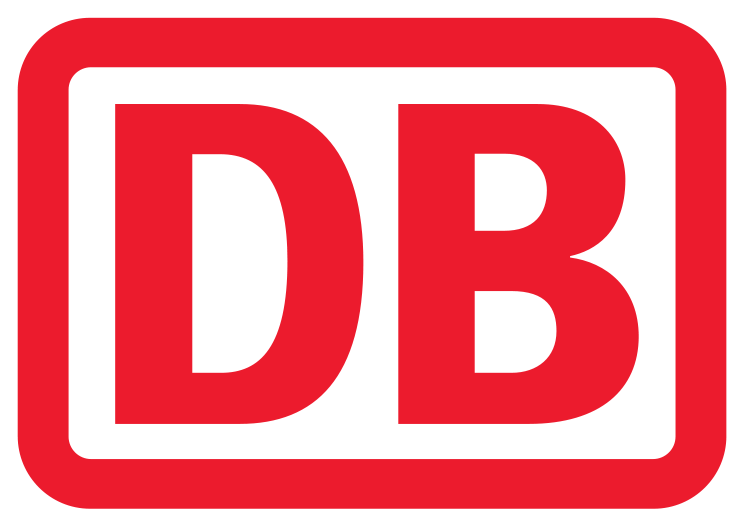Further training for certified customs managers
Actively manage customs processes in the company

Challenges and risks in foreign trade
- Introduction (terminology, responsibility of the German customs administration, delimitation of topics (customs law, foreign trade law and origin of goods as well as preferences)).
- Risks in the area of customs and foreign trade.
- Business units involved and their function for foreign trade processes.
- Overview of legal bases.
Operational customs clearance and customs duties
- Basics of importing and exporting goods (procedure, release for free circulation, export procedure, simplifications).
- Overview of customs procedures (storage, processing, use, dispatch).
- ATLAS / IZA (Internet customs declaration) / IAA-Plus.
- The import customs declaration (including broker management, compliance and controls within the company).
- The export declaration (including broker management, compliance and controls within the company).
- Parties involved in the import and export procedure.
- Fields of the customs declaration at a glance (including declarant, representative, description of goods, type of transaction, etc.).
- Overview of customs value (importance for customs audits!).
- The customs tariff number and its meaning.
- Customs documents (including import duty notice, export declaration/exit note, document coding).
- Prohibitions and restrictions.
- Internal responsibilities.
Overview of export controls
- Basic terms and responsibilities.
- Subject of export control (goods, countries and persons/organizations).
- Listed goods (including dual-use).
- Embargoes/sanctions.
- Export control: automation options.
Customs tariff classification and customs master data
- Importance of the customs tariff for national and international trade.
- Organization and structure of the customs tariff.
- Important terminology (e.g. Harmonized System, TARIC, Combined Nomenclature).
- The General Provisions (GP) of the Harmonized System.
- Best practices for the correct application of the customs tariff (including tools and databases for determining customs tariff numbers).
- Classification of parts and accessories.
- The binding customs tariff number (bTI).
- Entry and maintenance of customs master data.
- Consequences of incorrect classification.
- Use of AI for tariff classification.
Preference management in the company
- Concept of origin and delimitation ("Made in", "preferential origin").
- Non-preferential origin.
- Preferences as a competitive and customs advantage (new sales markets for your company).
- Origin preference and origin system (including over-the-counter preference vs. origin preference).
- Preference determination by means of rules of origin.
- Formal and non-formal proof of preference.
- The supplier's declaration.
- Retention of preferential documents.
- Risks associated with the incorrect issue of preference certificates.
- Preference calculation in practice.
- Preferential law for advanced students (including draw-back, territorial principle, direct transportation).
- Cumulation in the area of bilateral and diagonal free trade agreements.
- Simplifications in preferential law (including authorized and registered exporters).
- Automation options for determining preferences in the company.
Customs management and customs procedures
- Overview of customs procedures and customs simplifications (including simplified customs declaration, deferment of payment, binding information).
- Customs processing operations in practice (inward and outward processing).
- Customs transit procedures.
- Customs IT in practical application.
Compliance in the area of foreign trade
- Organization of customs matters in the company.
- Responsibilities and liability.
- Authorized Economic Operator (AEO) status and its advantages.
- Interfaces to other areas of the company (including VAT).
- Customs KPIs and controlling.
External audits by the customs administration
- General information on external audits (responsibility, legal basis, risks, rights and obligations, distinction between tax supervision and external audit).
- Preparation for the external audit (company perspective vs. customs auditor perspective).
- Carrying out an external audit (scope and principles of the audit, retention of documents).
- Completion of an external audit (concluding meeting vs. formal final meeting, audit report).
- Recommendations for action.
Exam content
The examination relates to the content of the two face-to-face modules.
Form of examination
The e-exam is an online-based exam on your PC/laptop. It takes approx. 1.5 hours.
You can access the e-exam via your learning environment.
It can be taken in a familiar environment and at a time of your choice.
The special feature of the exam is that the result is displayed immediately after completion of the exam. If you pass the exam successfully, you will receive a certificate from the Haufe Akademie corresponding to the exam result.
Contents
Module 1: Basics of customs law: beginner's course for successful customs clearance
Challenges and risks in foreign trade
- Introduction (terminology, responsibility of the German customs administration, delimitation of topics (customs law, foreign trade law, origin of goods and preferences)).
- Risks in the area of customs and foreign trade.
- Business units involved and their function for foreign trade processes.
- Overview of legal bases.
Operational customs clearance and customs duties
- Basics of importing and exporting goods (procedure, release for free circulation, export procedure, simplifications).
- Overview of customs procedures (storage, processing, use, dispatch).
- ATLAS - IZA (Internet customs declaration) - IAA-Plus.
- The import customs declaration (including broker management, compliance and controls within the company).
- The export declaration (including broker management, compliance and controls within the company).
- Parties involved in the import and export procedure.
- Fields of the customs declaration at a glance (including declarant, representative, description of goods, type of transaction, etc.).
- Overview of customs value (importance for customs audits!).
- The customs tariff number and its meaning.
- Customs documents (including import duty notice, export declaration/exit note, document coding).
- Prohibitions and restrictions.
- Internal responsibilities.
Overview of export controls
- Basic concepts and responsibilities.
- Subject of export control (goods, countries and persons/organizations).
- Listed goods (including dual-use).
- Embargoes/sanctions.
- Export control: automation options.
Customs tariff classification and customs master data
- Importance of the customs tariff for national and international trade.
- Organization and structure of the customs tariff.
- Important terminology (e.g. Harmonized System, TARIC, Combined Nomenclature).
- The General Provisions (GP) of the Harmonized System.
- Best practices for the correct application of the customs tariff (including tools and databases for determining customs tariff numbers).
- Classification of parts and accessories.
- The binding customs tariff number (bTI).
- Entry and maintenance of customs master data.
- Consequences of incorrect classification.
- Use of AI for tariff classification
Preference management in the company
- Concept of origin and delimitation ("Made in", "preferential origin").
- Non-preferential origin.
- Preferences as a competitive and customs advantage (new sales markets for your company).
- Origin preference and origin system (e.g. over-the-counter preference vs. origin preference).
- Preference determination by means of rules of origin.
- Formal and non-formal proof of preference.
- The supplier's declaration.
- Retention of preferential documents.
- Risks associated with the incorrect issue of preference certificates.
- Preference calculation in practice.
- Preferential law for advanced students (e.g. draw-back, territorial principle, direct transportation).
- Cumulation in the area of bilateral and diagonal free trade agreements.
- Simplifications in preferential law (e.g. authorized and registered exporter).
- Automation options for determining preferences in the company.
Module 2: Customs expert: Operational customs clearance in the company
Customs management and customs procedures
- Overview of customs procedures and customs simplifications (e.g. simplified customs declaration, deferment of payment, binding information).
- Customs processing operations in practice (inward and outward processing).
- Customs transit procedures.
- Customs IT in practical application.
Compliance in the area of foreign trade
- Organization of customs matters in the company.
- Responsibilities and liability.
- Authorized Economic Operator (AEO) status and its advantages.
- Interface to other business areas (e.g. sales tax).
- Customs KPIs and controlling.
External audits by the customs administration
- General information on external audits (responsibility, legal basis, risks, rights and obligations, distinction between tax supervision and external audit).
- Preparation for the company perspective vs. the customs auditor perspective.
- Carrying out an external audit (scope and principles of the audit, retention of documents).
- Completion of an external audit (final meeting vs. formal final meeting, audit report).
- Recommendations for action.
Module 3: E-test
Learning environment
In your online learning environment, you will find useful information, downloads and extra services for this training course once you have registered.
Your benefit
- Ability to correctly interpret and apply rules of origin.
- Competence to determine the origin of goods and to issue the correct proof of origin.
- Knowledge of the relevant databases.
- Safe exercise of the position as customs officer.
Methods
Trainer input, case/best-practice examples, checklists, discussion, exchange of experience
Recommended for
(Future) customs officers in the company, employees from the import and export departments
Final examination
The e-exam is an online-based exam on your PC/laptop. It takes approx. 1.5 hours.
You can access the e-exam via your learning environment.
It can be taken in a familiar environment and at a time of your choice.
The special feature of the exam is that the result is displayed immediately after completion of the exam. If you pass the exam successfully, you will receive a certificate from the Haufe Akademie corresponding to the exam result.
Further recommendations for "Further training for certified customs managers"
35373
35232
Start dates and details


 4.8
4.8








